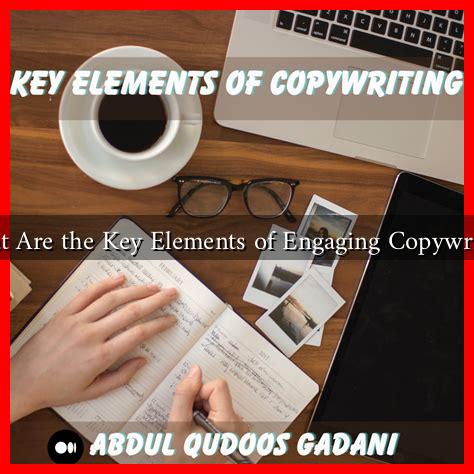-
Table of Contents
What Are the Key Elements of Engaging Copywriting?
In the digital age, where attention spans are shorter than ever, engaging copywriting has become a crucial skill for marketers, business owners, and content creators. Effective copywriting not only captures attention but also drives action, whether that’s making a purchase, signing up for a newsletter, or sharing content on social media. This article explores the key elements of engaging copywriting that can help you connect with your audience and achieve your marketing goals.
Understanding Your Audience
The foundation of engaging copywriting lies in understanding your audience. Knowing who you are writing for allows you to tailor your message to resonate with their needs, desires, and pain points. Here are some strategies to better understand your audience:
- Conduct Market Research: Use surveys, interviews, and analytics to gather data about your target demographic.
- Create Buyer Personas: Develop detailed profiles of your ideal customers, including their interests, challenges, and motivations.
- Analyze Competitors: Study how competitors communicate with their audience and identify gaps you can fill.
For example, a skincare brand targeting young adults might focus on issues like acne and affordability, while a luxury brand may emphasize quality and exclusivity. Understanding these nuances can significantly enhance your copy’s effectiveness.
Crafting Compelling Headlines
Your headline is the first impression your audience will have of your content. A compelling headline can make the difference between a reader clicking through or scrolling past. Here are some tips for crafting engaging headlines:
- Use Numbers: Headlines with numbers (e.g., “5 Tips for Better Sleep”) tend to attract more attention.
- Ask Questions: Questions engage readers and encourage them to seek answers in your content.
- Incorporate Power Words: Words like “ultimate,” “proven,” and “exclusive” evoke emotion and curiosity.
According to a study by CoSchedule, headlines with numbers can increase click-through rates by up to 36%. This statistic underscores the importance of investing time in crafting effective headlines.
Utilizing the AIDA Model
The AIDA model—Attention, Interest, Desire, and Action—is a classic framework for structuring engaging copy. Here’s how to apply it:
- Attention: Grab the reader’s attention with a strong headline or an intriguing opening sentence.
- Interest: Build interest by providing valuable information or storytelling that resonates with the audience.
- Desire: Create desire by highlighting the benefits of your product or service, addressing how it solves a problem.
- Action: End with a clear call to action (CTA) that tells the reader what to do next, such as “Sign up now” or “Learn more.”
For instance, a software company might start with a headline that captures attention, share a relatable story about productivity struggles, explain how their software can help, and conclude with a strong CTA encouraging a free trial.
Incorporating Storytelling
Storytelling is a powerful tool in copywriting. It humanizes your brand and makes your message more relatable. Here’s how to effectively incorporate storytelling into your copy:
- Use Real-Life Examples: Share customer testimonials or case studies that illustrate the impact of your product.
- Create a Narrative: Frame your message within a story arc—introduce a problem, present a solution, and conclude with a resolution.
- Be Authentic: Authenticity builds trust. Share your brand’s journey or values to connect with your audience on a deeper level.
For example, TOMS Shoes effectively uses storytelling by sharing the stories of individuals who benefit from their “One for One” model, where every purchase helps someone in need.
Optimizing for SEO
Incorporating SEO best practices into your copywriting ensures that your content is discoverable. Here are some essential SEO strategies:
- Keyword Research: Identify relevant keywords that your audience is searching for and incorporate them naturally into your copy.
- Use Meta Descriptions: Write compelling meta descriptions that summarize your content and include target keywords.
- Optimize Readability: Use short paragraphs, bullet points, and subheadings to make your content easy to read.
According to HubSpot, 61% of marketers say improving SEO and growing their organic presence is their top inbound marketing priority. This statistic highlights the importance of integrating SEO into your copywriting strategy.
Conclusion
Engaging copywriting is an art that combines understanding your audience, crafting compelling headlines, utilizing proven frameworks like AIDA, incorporating storytelling, and optimizing for SEO. By focusing on these key elements, you can create copy that not only captures attention but also drives action. Remember, the ultimate goal of copywriting is to connect with your audience and inspire them to take the next step, whether that’s making a purchase or sharing your content. As you refine your copywriting skills, keep these principles in mind to enhance your effectiveness and achieve your marketing objectives.
For further reading on effective copywriting techniques, check out Copyblogger’s Copywriting 101.

